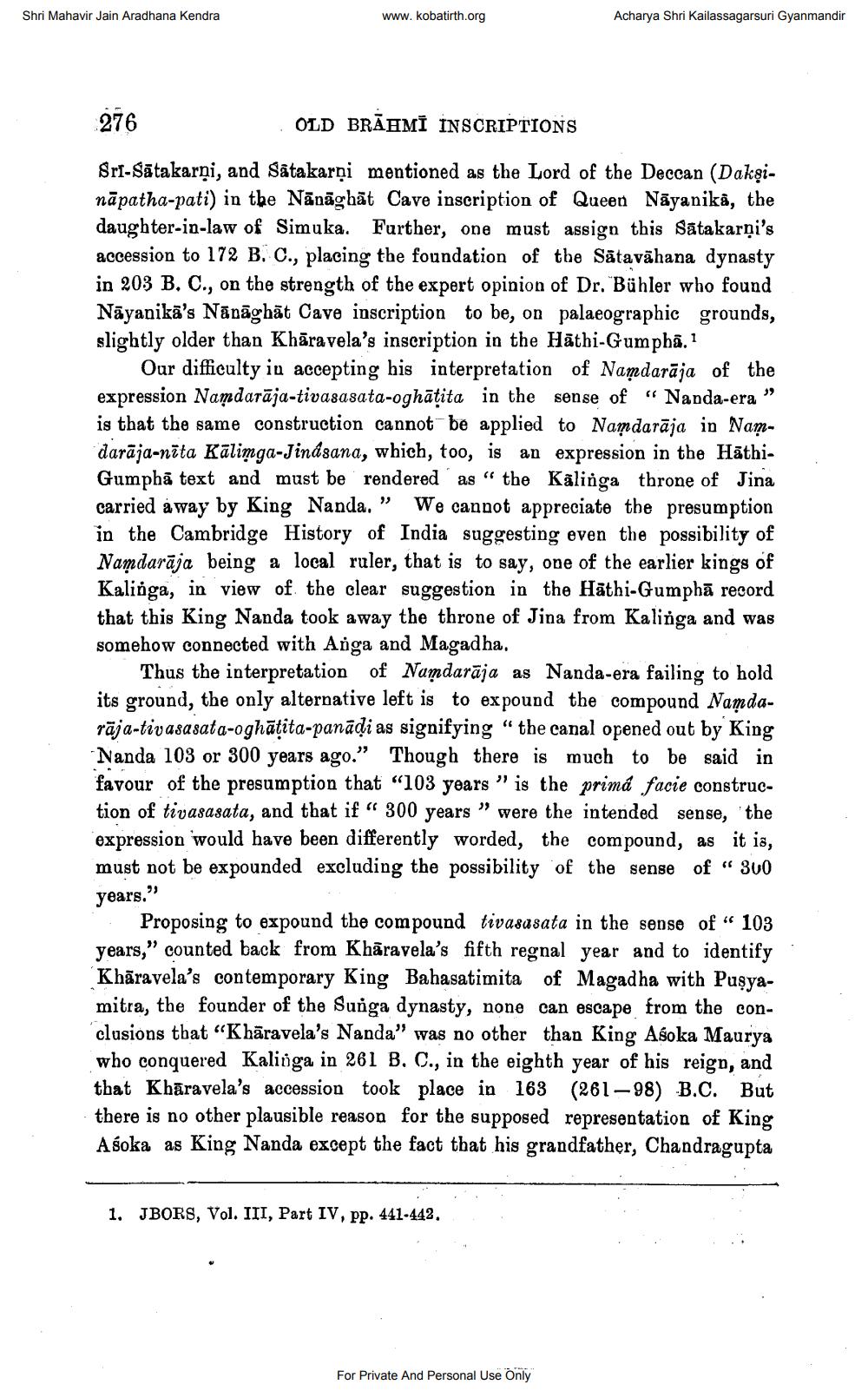________________
Shri Mahavir Jain Aradhana Kendra
www.kobatirth.org
Acharya Shri Kailassagarsuri Gyanmandir
276
OLD BRĀHMÍ INSCRIPTIONS Sri-Sātakarņi, and Satakarņi mentioned as the Lord of the Deccan (Dakşināpatha-pati) in the Nānāghāt Cave inscription of Queen Nāyanika, the daughter-in-law of Simuka. Further, one must assign this Satakarņi's accession to 172 B. C., placing the foundation of the Sātavāhana dynasty in 203 B. C., on the strength of the expert opinion of Dr. Bühler who found Nāyanika's Nānāghāt Cave inscription to be, on palaeographic grounds, slightly older than Khāravela's inscription in the Hāthi-Gumpbā.
Our difficulty in accepting his interpretation of Namdarāja of the expression Namdarāja-tivasasata-oghātita in the sense of "Nanda-era” is that the same construction cannot be applied to Namdarāja in Namdarāja-nita Kālimga-Jindsana, which, too, is an expression in the Hāthi
umphā text and must be rendered as “the Kalinga throne of Jina carried away by King Nanda." We cannot appreciate the presumption in the Cambridge History of India suggesting even the possibility of Namdarāja being a local ruler, that is to say, one of the earlier kings of Kalioga, in view of the clear suggestion in the Hathi-Gumphā record that this King Nanda took away the throne of Jina from Kalinga and was somehow connected with Anga and Magadha.
Thus the interpretation of Namdarāja as Nanda-era failing to hold its ground, the only alternative left is to ex pound the compound Namda. rāja-tivasasata-oghātita-panādi as signifying "the canal opened out by King Nanda 103 or 300 years ago." Though there is much to be said in favour of the presumption that "103 years" is the prima facie construction of tivasasata, and that if " 300 years ” were the intended sense, 'the expression would have been differently worded, the compound, as it is, must not be expounded excluding the possibility of the sense of “ 300 years."
Proposing to expound the compound tivasasata in the sense of “ 103 years," counted back from Khāravela's fifth regnal year and to identify Khāravela's contemporary King Bahasatimita of Magadha with Puşyamitra, the founder of the Sunga dynasty, none can escape from the conclusions that "Khāravela's Nanda' was no other than King Asoka Maurya who conquered Kalinga in 261 B. C., in the eighth year of his reign, and that Khāravela's accession took place in 163 (261–98) B.C. But
is no other plausible reason for the supposed representation of King Asoka as King Nanda except the fact that his grandfather, Chandragupta
1. JBORS, Vol. III, Part IV, pp. 441-442.
For Private And Personal Use Only




